
The Differences Between QGIS and ArcGIS
You probably grew up using ArcGIS… or QGIS…
And every day, you sit down at your computer desk
…and you do the same thing:
You open up the same ArcGIS software…or QGIS software (albeit a newer version) because that’s what you know best.
But have you ever asked yourself:
Can I get MORE from using different GIS mapping software?
We navigate you through the differences between ArcGIS and QGIS because you’ll be more efficient and more advanced of a GIS user.. It’s a head-to-head GIS software showdown with the star-studded lineup in the GIS industry – ArcGIS vs QGIS..
1 QGIS mind-blowingly consumes all types of data
ArcGIS has broken more hearts than anyone for consuming data.
No questions asked. QGIS has the edge for consuming data. QGIS is versatile. It’s cutting edge when it comes to consuming data.
QGIS uses the GDAL/OGR library to read and write GIS data formats. Over 70 vector formats are supported.
QGIS was born to work with PostGIS. But the list goes on for GIS format consumption… ENC, shapefile, geodatabase, MapInfo formats, Microstation file formats, AutoCAD DXF, SpatiaLite, Oracle Spatial, MSSQL Spatial databases, WellKnownText (WKT)…
Instead of pounding the pavement to load your NetCDF files, QGIS will consume it for YOU.
Instead of wasting time trying to add space-delimited files, the QGIS interface lets you roll it in 24 hours a day. (Because setting custom delimiters in QGIS is even better than Microsoft Office.)
Instead of poring over piles of conflicting and confusing GIS formats, simply consume it with QGIS.
ArcGIS has broken more hearts than anyone for consuming data.
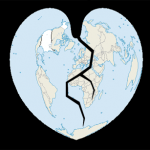
While QGIS has won my heart.
2 Simplicity is beauty for user experience
You never realized how powerful the ArcGIS “Add Data” could be, did you?
Yes this “Add Data” button:
You laugh now, but think about it:
This one button simplifies adding data because it recognizes all GIS formats.
Do you want to add a spreadsheet? Do you want to add a raster? Push the “Add Data” button. It’s that easy.
In QGIS, do you want to add a spreadsheet?
Click the “Add Vector” button. Select the all data formats drop-down.
The separate buttons in QGIS (add vector, add raster, and PostGIS, add SpatialLite, etc) is tolerable but adds confusion.
Another instant crush is the splash screen in ArcMap that displays your latest map documents. Retrieve old MXDs because we all have to return to unfinished business. This feature is available in QGIS by selecting Project > Open Recent .

Simplicity is a thing of beauty for use experience.
And ArcGIS execution is genius.
3 Explore your geodata with ArcCatalog and QGIS Browser
QGIS Browser and ArcCatalog are stand-alone GIS data management applications.

These applications help many manage their raster, vector and GIS data. They give basic preview functions but the focus is on data access and organization.
Pin down missing data sets by using the filter and search tools. It’s like your own personal Google search engine. With ArcCatalog, it’s not only for data, but also maps, models and tools.
A part of managing data is creating metadata. When was it created? Who is the creator? How was it made? The answers can be found in metadata.
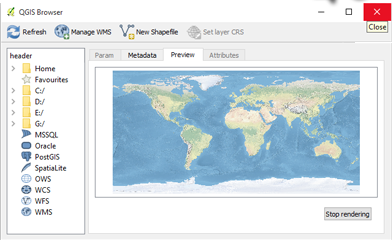
Over the years, metadata has evolved into a variety of formats (ISO, FGDC, INSPIRE and NAP). ArcCatalog rises to the occasion giving users the option to select their own metadata standards.
Both QGIS Browser and ArcCatalog help to easily navigate in your filesystem and manage geodata…
The edge goes to ArcCatalog because of its options.
4 Fearlessly join tables in ArcMap and QGIS
When you join a table to spatial data, you’re putting each row on the map.
Creating table joins is intuitive in ArcGIS. In ArcMap, you can right-click a layer and select ‘join’. You can also join via the layer properties.
And it’s really just as simple in QGIS.
In QGIS, you can join tables with the layer properties. When you make a table joins in QGIS, it gives the option to rename the prefix of that specific join. With multiple joins, this is a useful feature.
But both are winners in my books.
5 ArcGIS and QGIS hit the bullseye for coordinate systems and projections
The first data set you add to ArcMap determines your coordinate system.
When other data sets are added in other coordinate systems, ArcGIS will project the data “on the fly”. This means the layer will match the initial layer and data frame’s coordinate system.
A ‘Unknown Spatial Reference’ means there’s a datum conflict. In this case, ‘unknown units’ will appear in the bottom right corner of ArcMap and you should use the Define Projection tool.
QGIS has support for 2,700 known coordinate reference systems (CRS). It allows you to define global and project-wide CRS for layers without a pre-defined CRS. It also allows you to define custom CRS and supports on-the-fly projection of vector and raster layers.
Both ArcGIS and QGIS handle CRS in a user-friendly way. Issues have risen with .PRJ in QGIS. But that’s a thing of the past.
6 ArcGIS Online loads your arsenal with real world GIS data
QGIS gives you a couple basemaps with the OpenLayers plugin.
But it’s nowhere close to ArcGIS Online.
When you open the ArcGIS Online’s data catalog, you’ll feel like a kid on Christmas. Unwrap thousand of gifts like government data, detailed basemaps and crowd-sourced information.
The basic ArcGIS license gives you access to ArcGIS Online – a GIS data goldmine.
A generic search for “environment” returns over 2887 GIS datasets. 2887. USDA Wildfires, NOAA Damaging Winds, World Climate Total Annual Precipitation, Ocean Bathymetry Basemap. This would make any environmental researcher squeal in delight.
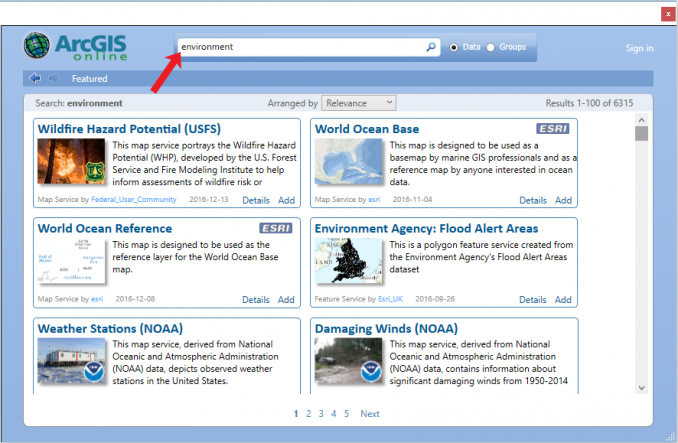
The bottom line is that ArcGIS Online (AGOL) is a rich source of GIS data. It helps you analyze and make even more powerful and knowledgeable decisions.
Remember that with great power comes responsibility. Use the power wisely, my friend.
7 Licensed to geoprocess
“Licensed to geoprocess” sounds like a really bad movie. ArcGIS is the villain forcing you to connect to your license. QGIS is the open source hero.

ArcGIS has a very good geoprocessing framework. Very solid. Very extensive.
But your license level determines which tools you can use in ArcGIS. A basic license still gives you access to a large number of powerful tools. An advanced license gives you access to everything.
Now this part is important:
There are no license levels in QGIS. Open source QGIS software does not limit which tools can be used.
If you want to use the erase tool in ArcGIS 10, you’d have to turn on the advanced license. If there are no available advanced licenses, it means you can’t use the erase tool. (You could use the free trial of ET GeoWizards).
Now, take this to the bank:
The erase tool is readily available in QGIS in the Vector Analysis toolbox. (It’s the Difference tool) Same as the symmetrical difference tool, which isn’t available with a basic ArcGIS license.
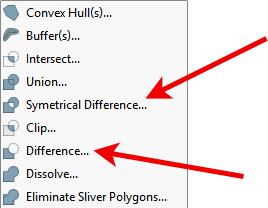
There’s tool integration with GRASS and SAGA GIS, this gives you the necessary horsepower at your disposal to solve almost every geospatial problem.
QGIS is working on its geoprocessing framework which is already impressive. But in the end, you really are licensed to geoprocess in ArcGIS. It’s like a bad horror movie with the inconvenient 999999 error.
This makes QGIS a dominant winner in this category.
Have no fear, the plugins are here
Sorry, you thought we were talking about QGIS, didn’t you?
We all know you can engineer specialized analyses with plugins. QGIS has boatloads of pluginsto solve everyday GIS problems. Over 300 of them.
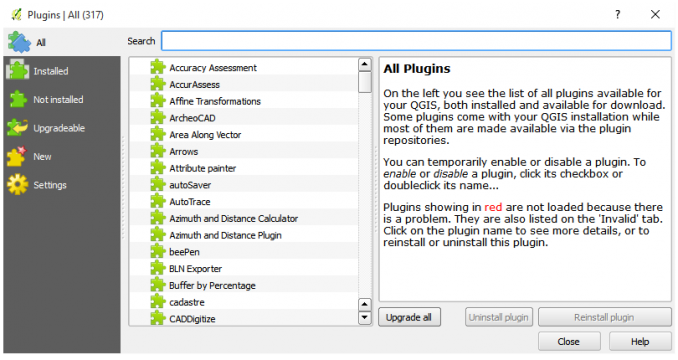
But what you may not have known is that ArcGIS has plugins too. There are solutions for practically EVERY GIS problem.
Free integration with R stats (Geospatial Modelling Environment), Marine Tools add-on, NetCDF interoperability, ET GeoWizards, ArcGIS Patch Analyst,…With Esri’s latest addition for an app store of their own – ArcGIS Marketplace, even more plugins will be rolling out like clockwork.
There are paid (and free) solutions for almost any spatial problem you can think of. Esri has nailed every corner of the market including gardening. You have to understand how scalable and unique Esri is to solve your geospatial problem.
QGIS is a lean-mean vector processing machine…
but it just doesn’t has the variety of specialized tools available in Esri.
9 Raster processing in both QGIS and ArcGIS are crazy, stupid useful
The Spatial Analyst extension packs the most punch for raster data manipulation.

Whether it’s simple math (map algebra and conditional toolset), statistics (multivariate, neighborhood or zonal toolsets), or generating value surfaces (interpolation, density or overlays), ArcGIS raster-based tools are rock-solid. The Spatial Analysis tools also offers specialized tools for groundwater, hydrology, cost surfaces and solar radiation. Other options are to filter (reclass or extraction tool sets) or simplify data (generalization toolset).
In QGIS, the raster calculator tool performs map algebra with a little less math and trigonometry functions. QGIS has multiple ways to perform interpolation. Ordinary and universal kriging are separate tools in QGIS, but in ArcGIS it’s a radio button under the kriging tool. GRASS r.cost is for cost surfaces. QGIS wins for more filtering options. There are groundwater and solar radiation tools in QGIS, but not like ArcGIS
We could continue. But choose not to bore you.
It’s difficult here to pin down a winner, as both stand out for having a plethora of raster manipulating options.
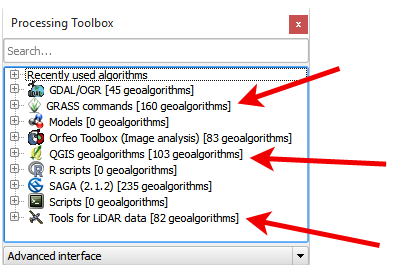
10 ArcGIS Geostatistical Toolbox is crowned winner because it teaches you stats
Have you ever tried to assemble furniture without the instruction manual? Practically impossible, right?
When you run tools in the ArcGIS Geostatistics Toolbox, the instructions and output explanations are so clear that a child could understand the results.
For example:
When you run Moran’s I, the report output delivers a concise explanation. You know if your data is auto-correlated or not.
In QGIS, you need a good understanding of the tool beforehand. This isn’t necessarily a bad thing. But you don’t get the silver platter like ArcGIS 10.
The exploratory regression tools in ArcGIS are well made because the outputs allow users to connect statistics with their data. This saves time for analysts.
The Group Stats plugin in QGIS is neat. It’s like an interactive pivot table creator integrated in QGIS. The columns are your statistics types (average, minimum, variance, etc). Rows are categorical fields such as place names or watersheds. Add a value field and push calculate. Voila, your pivot table is generated.
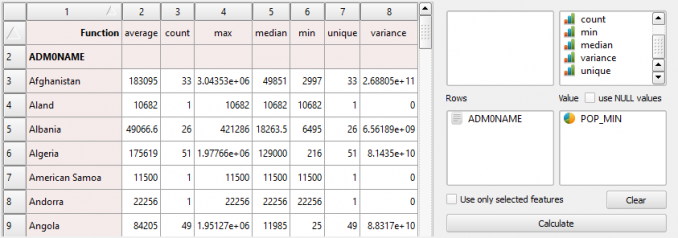
When you can make difficult concepts straight-forward, you become a winner in my book. And ArcGIS is best at teaching geostatistics.
11 You have x-ray vision using QGIS remote sensing tools
Silently in the vacuums of space, satellites are passively and actively collecting the various EM spectra of Earth. Satellites like Sentinel 2a and Landsat-8 are the exciting ones making data more ubiquitous to GIS analysts.
QGIS and ArcGIS present a myriad of tools for remote sensing.. Some of these are like hand tools, like a chisel. Others are like power tools, like an electric drill.
The QGIS semi-automatic classification plugin lets you download Landsat imagery and classify them in a semi-automatic way. The Orfeo toolbox delivers a range of tools to filter, process and manipulate raster data. LASTools can be integrated to handle LiDAR. We found it difficult to set up. But LASTools has always been solid for LiDAR handling.
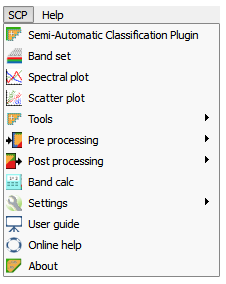
When ArcGIS 10.1 added the image analysis toolbar, it instantly provided remote sensing analysts with the necessary tools to create samples, and perform unsupervised and supervised classification. Pansharpen, perform NDVI, orthorectify and interactively change the brightness, contrast and transparency. The LAS Dataset (LASD) is an awkward way to work with LiDAR. It still gets the job done.
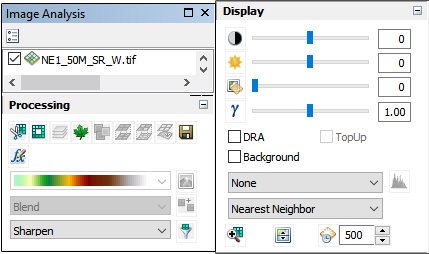
No stand outs. But QGIS deserves an edge for remote sensing.
12 Route your next fishing trip with ArcGIS network analyst
Almost everyone has needed a routing analysis in their life.
- Where’s the closest beer store?
- What’s the fastest route to that beer store?
Here’s Las Vegas to the Grand Canyon:
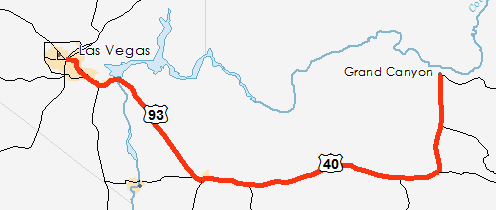
In ArcGIS, flick on the network analyst switch. Add your data to a network data set. Building a clean topological road dataset is the challenge. But after this, you’re ready to go.
Using the “Road Graph” plugin, QGIS calculates the shortest path. QGIS lacks some of the tools found in ArcGIS network analyst – Location-allocation, New OD Cost Matrix, etc.
The ArcGIS network analyst extension is the networking extension of champions.
13 Direct workflow (like a boss) using ArcGIS Model Builder
Have you ever wanted to put your workflow in auto-pilot?
Think about it for a second:
When you run redundant tasks as a scheduled model, you can sit at home in your bathrobe all day long (and still get work done.)
And ArcGIS Model Builder is the most intuitive, rock-solid, pragmatic way to automate geoprocessing jobs.

You string together sets of tools in Model Builder to automate processes. It has iterators to do “for” and “while” loops. Drop tools in your Model Builder Diagram and connect them together. It’s easy.
Go one step further:
Export your model and share with others. Or export as a Python script and customize it.
ArcGIS scripting is almost all run through the Arcpy module. Arcpy coding is incredibly easy because almost every tool in ArcGIS has a scripting tool of the same name already created (which you can easily copy and paste from Esri’s website). Automate everything.
QGIS has the same functionality as ArcGIS Model Builder and it’s called Graphical Modeler.
You graphically develop sets of tools in a specified order using QGIS Graphical Modeler.
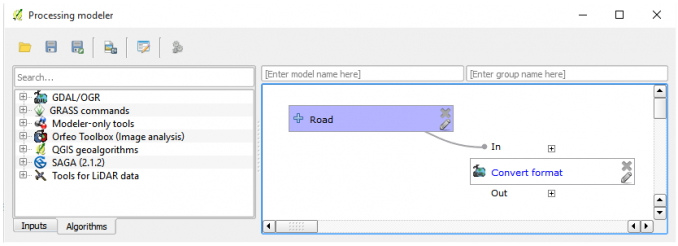
QGIS tends to crash often when using the modeler. It’s shaky. Save often.
For QGIS, you have PyQGIS. There is no QGIS module and you will be using GDAL a lot. You will also be using a bunch of other modules as needed for different projects. It can be difficult to figure out what to use and where it all is.
Despite the bugs, in the end you can achieve the desired results.
We love model builder. We love ArcPy. These are two of the brightest spots of ArcGIS.
14 Design a cartographical masterpiece in ArcGIS and QGIS
Open source skeptics think that ArcGIS is the only way you can create beautiful maps.
But QGIS is a viable option to create cartographic masterpieces. QGIS mapping interface is called ‘Print Composer’. It acts almost like another application.
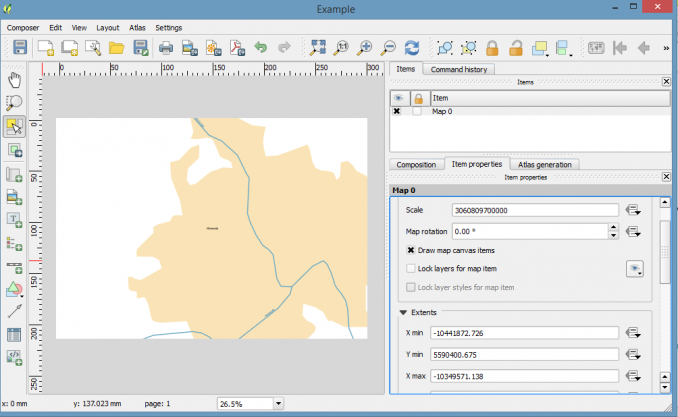
… But once you symbolize and label features in your layout, this is when you realize that QGIS is a cartographer’s dream.
ArcGIS layout view is how to set up map templates and export map products. ArcGIS experts in various formats like PDF, JPG, SVG, AI, PNG, EPS and EMF. ArcGIS layout view is practical. It has tools to pinpoint your labels, set up mapbooks and link data frames with easy extent rectangles.
We like both QGIS and ArcGIS for all-purpose mapping.
15 Create symbology that rocks your readers’ world in QGIS
ArcGIS is loaded with stunning symbology on startup. We like the symbology by discipline (transportation, real estate, soils, weather, etc). It’s great for point, line and polygon styles. The existing symbology in ArcMap is beautiful, useful and plentiful.
QGIS misses the beat on pre-existing choices. Life would be easier in QGIS if it came equipped with symbology like railways and hatched polygons. Keep in mind: you can download and load them to your symbology palette.
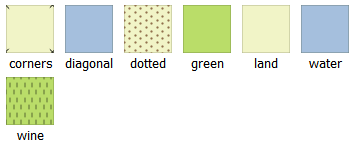
Where QGIS sputters, it makes up ground for its Adobe Photoshop-like array of fill options. It has more blending options than a symbology bakery: lighten, screen, dodge, addition, darken, multiply, burn, overlay, soft light, hard light and difference.
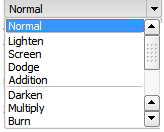
Gradient fills makes QGIS a cartographer’s paradise. You can create simple gradients with two or multiple colors. Add the different types-linear, radial, conical. Save as a QGIS layer style file (*.QML).
But the icing on the cake is the “Color Picker”. It’s such a simple idea for selecting colors. You no longer have to write a RGB code again.
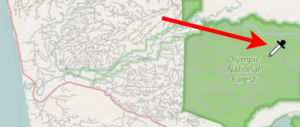
QGIS has some really advanced symbology. ArcGIS is practical and puts symbols in the hands of the cartographer. Both are winners in my books.
16 Design dynamite labels & annotation in QGIS
Labelling is fantastic in QGIS. QGIS is a whole new level of style.
- Buffer text with a flaring glow.
- Add drop shadows for style points.
- Set transparencies, blending modes and offsets
These subtle differences give your labels serious pop.

While ArcGIS lacks some of the beauty of QGIS labelling, you can get surgical for placing labels with ArcGIS maplex labeling engine. Gain full control of exactly how and where you want to label features. Set label location and scale dependency. Curved and Parallel labelling is easy in ArcGIS. It’s smart.
The drawing toolbar is how to control annotation groups in ArcGIS. It’s not intuitive. Make a separate toolbar for annotations. But with a little practice you can control which annotation group labels belong to.

The upside is QGIS beautiful labels. But placement properties and annotation favors ArcGIS.
17 Become a map automation quarterback with Data Driven Pages
If you’re in the map-making business, you should use data driven pages in ArcGIS. It is your complete arsenal for automated map production.
The index layer is used to create each individual page. The Data Driven Pages toolbar and the Cartographer Toolbox is the one-two punch combo for mapbooks.
The Cartographer Toolbox is how to create strip maps. If your map spans multiple projections, use the Calculate UTM zone tool .
QGIS’ Composer has the ability to create an “Atlas” built-in, and it works very well.
Using Atlas Generation, select your coverage layer which contains geometries and fields. For each geometry in the coverage layer, a new output will be generated. Fields associated with this geometry can be used within text labels. A page will be generated for each feature.
Atlas works well. QGIS atlas and ArcGIS data driven pages are for quantity.
18 Hoist the anchor and sail away from two dimensions in ArcGlobe & ArcScene
It’s time to hoist the anchor and sail away from two dimensions.
ArcGlobe and ArcScene are stand alone programs using the 3D analyst extension. These applications give you a chance like no other to enter a world in 3D.
ArcScene is for small study area scenes. Extrude objects with amazing vertical exaggeration. The z-factor is your friend.
ArcGlobe is for data that spans the whole globe. Make your data come to life. Perform wicked fly-throughs.
Just make sure you enable your 3D analyst license before hand.
QGIS lacks decent 3D support. The Qgis2threejs plugin can catapult you in three dimensions. The Qgis2threejs plugin exports terrain data, map canvas image and vector data to your web browser.
But just don’t expect something as polished as ArcGlobe or ArcScene. Ya, ArcGIS is much better than QGIS for your 3D needs.
19 Design epic webmaps and tell your story
Webmaps are on the uptrend. The news industry, governments and businesses are using webmaps because they tell a story.
Web mapping is easy in ArcGIS. Cartographers send data to the web via ArcGIS Online. ArcGIS Online for webmaps is where the online maps are held on Esri’s GIS cloud.
A cool trend are ArcGIS story maps because everyone has a story to tell. With ArcGIS, you can harness the power of maps to tell yours
QGIS Server provides a web map service (WMS). The WMS uses the same libraries as the Quantum GIS (QGIS) desktop application. Maps and print templates created in QGIS desktop can be published as web maps simply by copying the QGIS project file into the server directory.
The slick South Perth and Swellendam, South Africa uses Leaflet clients and are example of QGIS server web maps.
20 Sail through turbulent times with ArcGIS animations
Have you ever wanted to animate your data?
Watch polar ice caps melt over time. Display global time-aware weather patterns. ArcGIS makes it an easy process to go from static to dynamic with its animation toolbar. GIS time series animations are easy in ArcGIS.
When you have a time-enabled field, scroll the time slider left-to-right. Watch your data change over time. A little preparation is necessary but nothing too painful. Export as a AVI and impress your boss.

The TimeManager plugin adds time controls to QGIS. Using time controls, you animate vector features based on time attributes. There is also an experimental raster layer support and interpolation between point geometries. You can create animations directly in the map window and export image series.

21 Construct color-coded thematic maps
Social scientists often construct thematic maps because they show a particular theme connected with a specific geographic area
For thematic mapping in QGIS, cartographers have a range of options – graduate colors, graduated symbols, proportional symbols and dot density. Symbolize numeric data with pie, bar/column, histograms and text diagrams.
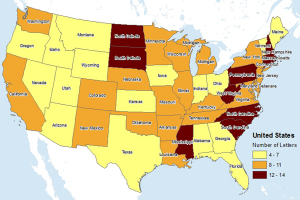
One of the unique tools in QGIS is the heatmap display. Take a point data set and instantly create a heat map (without raster conversion). Adjust the radius, color ramp, transparency and blending mode. In the end, the heat map renderer delivers live dynamic heatmaps for point layers.
You can symbolize multiple fields in QGIS using the “set column expression” or “rule-based expression”. But in ArcGIS, it’s fast, easy and intuitive using unique values, many fields . Dot density maps and stacked charts are unique qualities to ArcMap.
Using both ArcGIS and QGIS, you can become a thematic mapping legend. Not the legend you see in a map, of course.
22 Create mind-blowingly detailed edits with ArcMap’s Advanced Editing tools
There are subtle differences between ArcGIS and QGIS editing. But not all editing tools are created equal.
For example:
You right-click to end a sketch in QGIS. You double-click to end a sketch in ArcGIS. You’d be surprised how refreshing it is to end a sketch with a right-click. It’s easy to mistakenly double-click when creating a lot of vertices.
QGIS offers a range of tools for editing like reshaping, splitting and tracing (with the AutoTrace plugin). Delete rings from features and create donuts with simplicity. You snap features using snapping options. The QGIS CadTools plugin provides 13 advanced tools. One of the bright features is rolling back edits in QGIS. This can only be done in the vertex sketch properties in ArcMap. Every vertex can be moved and removed.

It’s painless to create data in ArcMap. ArcGIS has more options for advanced editing. You create features by setting up feature templates. The advanced editing enables tools like exploding multipart features, fillet/trim/extending curves and replacing geometry. The trace tool in ArcMap was sent from heaven.

23 You have 99 problems but a topology error isn’t one
- Do points overlap polygons?
- Do overlaps exist?
- Should lines touch the boundary of polygons?
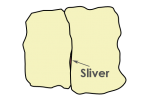
The only word I can describe topology in ArcGIS is genius. This is a genius toolbar.
If you’re worried your GIS data has errors (overlaps, gaps), ArcGIS supports richer, complex error checks with their topology tools. Inspect your topology with over 30 rules with the error inspector. Resolve topology issues with automatic or manual fixes.
Once your data is in a geodatabase, you can start creating topology rules.

QGIS delivers a couple of rules for topology: “must contain”, “must not have duplicates”, “must not have gaps”, “must not have invalid geometries”, “must not have multi-part geometries”, “must not overlap” and “must not overlap with”. You validate your geometry based on these rules, but how do you fix it?
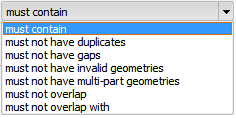
ArcGIS topology fixing is interactive. One-by-one, you can go through errors and fix them.
Topology editing is a strong point in ArcGIS with a ton of options to fix editing errors.
Best of its kind.
24 Perform data entry like a pro
Both QGIS and ArcGIS are hard-hitting GIS data entry machines. They both provide similar functionality.
When you create a shapefile in QGIS, you are prompted to set up your fields (text, whole, decimal number or date). With ArcGIS, you create fields (integer, float, double, text or date) afterwards – unless you’re in ArcCatalog.

When fields are created in QGIS, you can rename them using the Table Manager plugin. You probably thought in ArcGIS, you have to create a new field and copy the contents over to the new field. But the Alter Field (Data Management) can accomplish this
In geodatabases, users can set up subtypes, domains and default data entry. When users start entering attribute information, they can select from drop-down lists. This is how to steer clear from invalid entries when GIS analysts start going rogue.
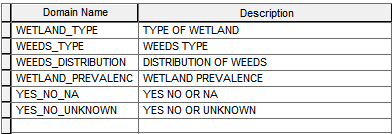
Selection by location has been improved with its interactive selection tool. When records are selected, they can be filtered even more so (selected from, added to, removed from). The field calculator supports Python and VB to execute code.
One of the many quirks in ArcGIS is that you have to stop editing to calculate a field.
This does like a champ.
25 Locate XY coordinates by geocoding addresses
Geocoding is the process of giving XY values to street addresses.
One option to geocode is through ArcGIS Online Geocoding. This is a paid service requiring credits to use.
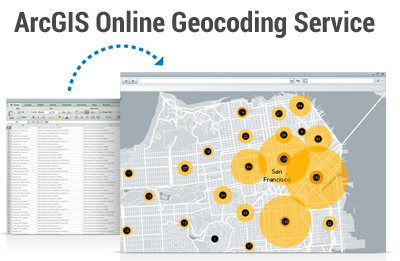
ArcGIS Desktop has its own way to geocode using your own data. To do this, you create an address locator. Find addresses using the Geocoding Toolbar. Type the location and add a labeled point.
If you want to avoid credit systems of any form, then you have two options in QGIS. Both are good options.
The MMQGIS plugin is great for bulk geocoding. This plugin takes a spreadsheet (CSV) containing multiple addresses and adds them to the map canvas as points.
The GeoCode plugin requires an address as input. Type an address.

Press OK. Watch your address appear on the map.
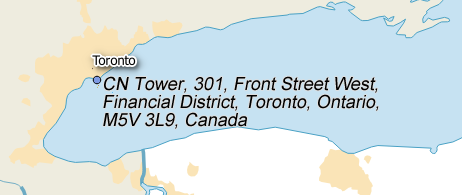
Five for five. Boom!
We don’t like the idea of credits, or paying additional costs for geocoding. Go with QGIS for geocoding.
26 Alter geometries with data conversion tools
It’s any cartographer’s bread and butter to generalize features, to convert polygons to points or vice versa. And sometimes altering features can be tricky. But with QGIS on your side, it doesn’t have to be:
In QGIS, you can convert lines to polygons, points to polygons, or anything in between.
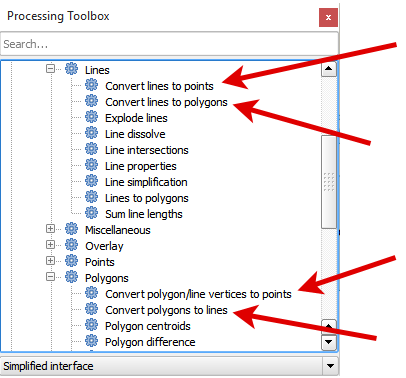
In ArcMap, it completely depends on the task. You may need the advanced license for data conversion.
QGIS has some pretty cool generalization tools too. These are used to simplify lines, aggregate points and polygons and more.
27 ArcGIS drowns readers with rock-solid examples and documentation (in a good way)
Documentation is superb in ArcGIS. ArcGIS not only provides in-depth documentation on how to use tools. It delivers sample data for you to get hands-on experience.
This is not to say QGIS documentation isn’t good. It’s informative. It’s well-written. It’s practical. But it hasn’t been rung through the dryer like ArcGIS.
Esri has Geonet.

While GIS Stack Exchange is the central community hub for QGIS users.

QGIS support is very active. A dedicated volunteer community supports QGIS newbies. The ArcGIS community consists of staff and enthusiastic users.
They both are hit and miss when it comes to supplying answers to problems.
Let’s Wrap Things Up
GIS really comes down to just 4 simple ideas: Create geographic data. Manage it. Analyze it and… Display it on a map. These are the primordial functions and are served well in both GIS software.
You can’t go wrong with either GIS mapping software – QGIS or ArcGIS.

QGIS is free. It has multi-language support. It relies on volunteer efforts which is really good. It has huge support on stack exchange. The more you work in QGIS, the more hidden gems you find: interactive pivot tables with GroupStats, adding CSVs with simplicity and the stunning cartographical symobology and labeling options.
ArcGIS is one of the best GIS investments you could ever make. It’s expandable. It has the biggest user community to find answers. It provides tutorials with sample data for you to get hands-on experience. Model builder and automation are top caliber. The specialty software in ArcGIS extension is also a thing of beauty.
In the crudest terms, we’d rank it like this: ArcView < ArcEditor < QGIS < ArcInfo. ArcInfo is the victor.
We’ve cut through the clutter and made ArcGIS and QGIS simpler for you.
Now it’s your turn.
Where does ArcGIS triumph?
Where does QGIS have an edge?

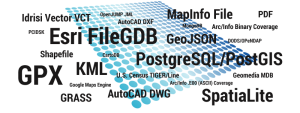


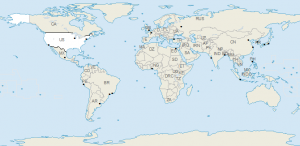
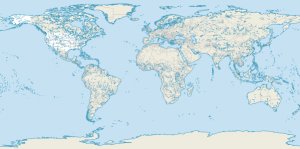
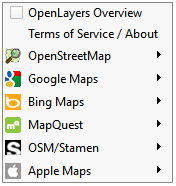
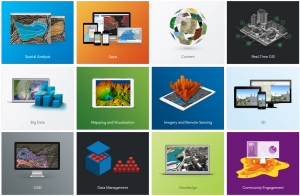
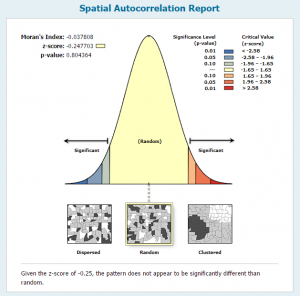
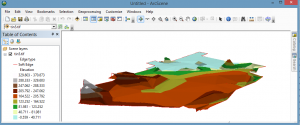
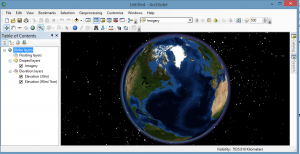
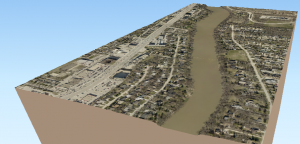
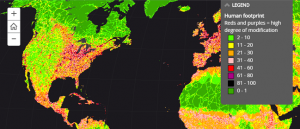

No comments:
Post a Comment
Thanks for your comments